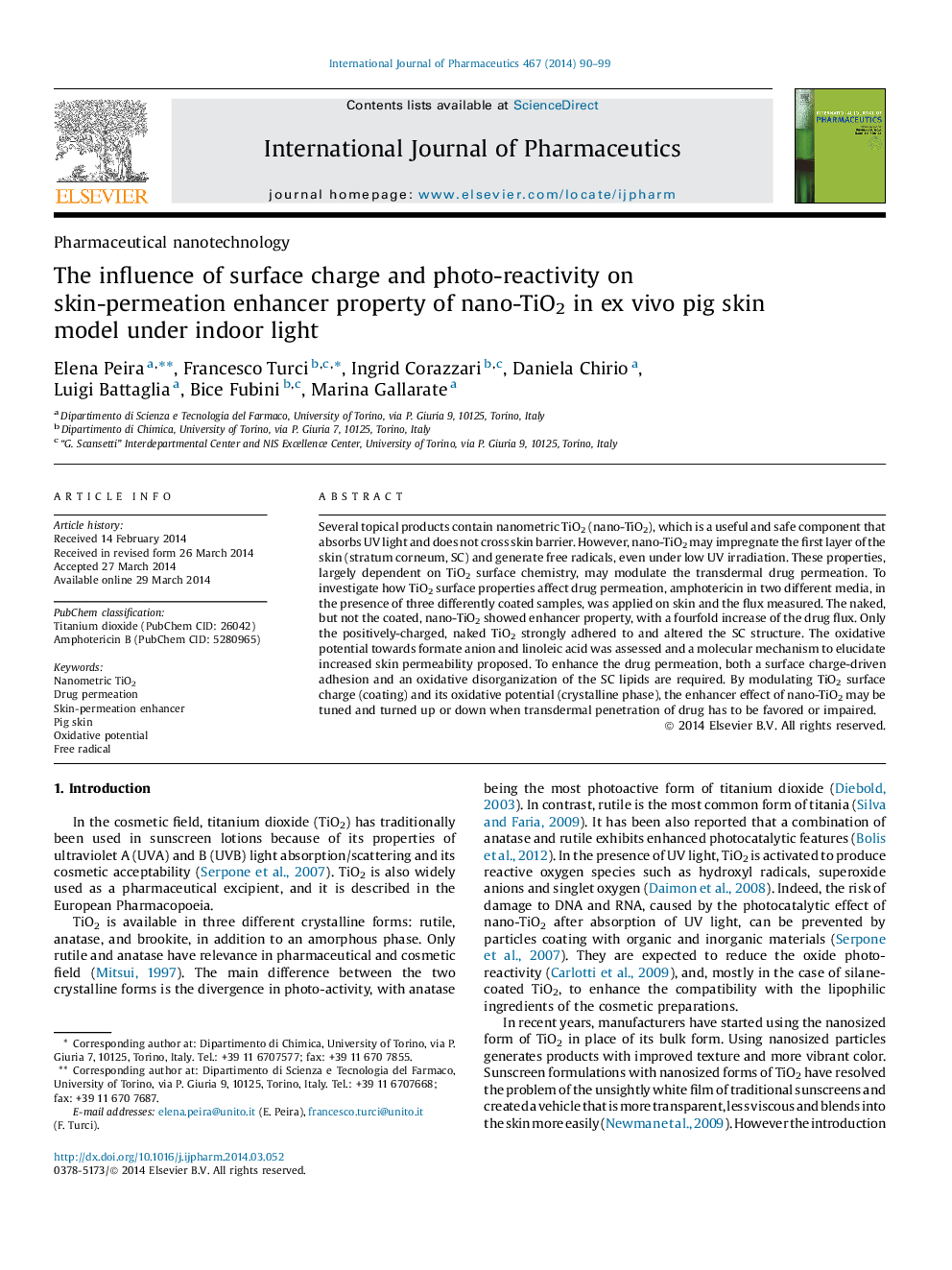| Article ID | Journal | Published Year | Pages | File Type |
|---|---|---|---|---|
| 2501900 | International Journal of Pharmaceutics | 2014 | 10 Pages |
Several topical products contain nanometric TiO2 (nano-TiO2), which is a useful and safe component that absorbs UV light and does not cross skin barrier. However, nano-TiO2 may impregnate the first layer of the skin (stratum corneum, SC) and generate free radicals, even under low UV irradiation. These properties, largely dependent on TiO2 surface chemistry, may modulate the transdermal drug permeation. To investigate how TiO2 surface properties affect drug permeation, amphotericin in two different media, in the presence of three differently coated samples, was applied on skin and the flux measured. The naked, but not the coated, nano-TiO2 showed enhancer property, with a fourfold increase of the drug flux. Only the positively-charged, naked TiO2 strongly adhered to and altered the SC structure. The oxidative potential towards formate anion and linoleic acid was assessed and a molecular mechanism to elucidate increased skin permeability proposed. To enhance the drug permeation, both a surface charge-driven adhesion and an oxidative disorganization of the SC lipids are required. By modulating TiO2 surface charge (coating) and its oxidative potential (crystalline phase), the enhancer effect of nano-TiO2 may be tuned and turned up or down when transdermal penetration of drug has to be favored or impaired.
Graphical abstractFigure optionsDownload full-size imageDownload high-quality image (230 K)Download as PowerPoint slide
